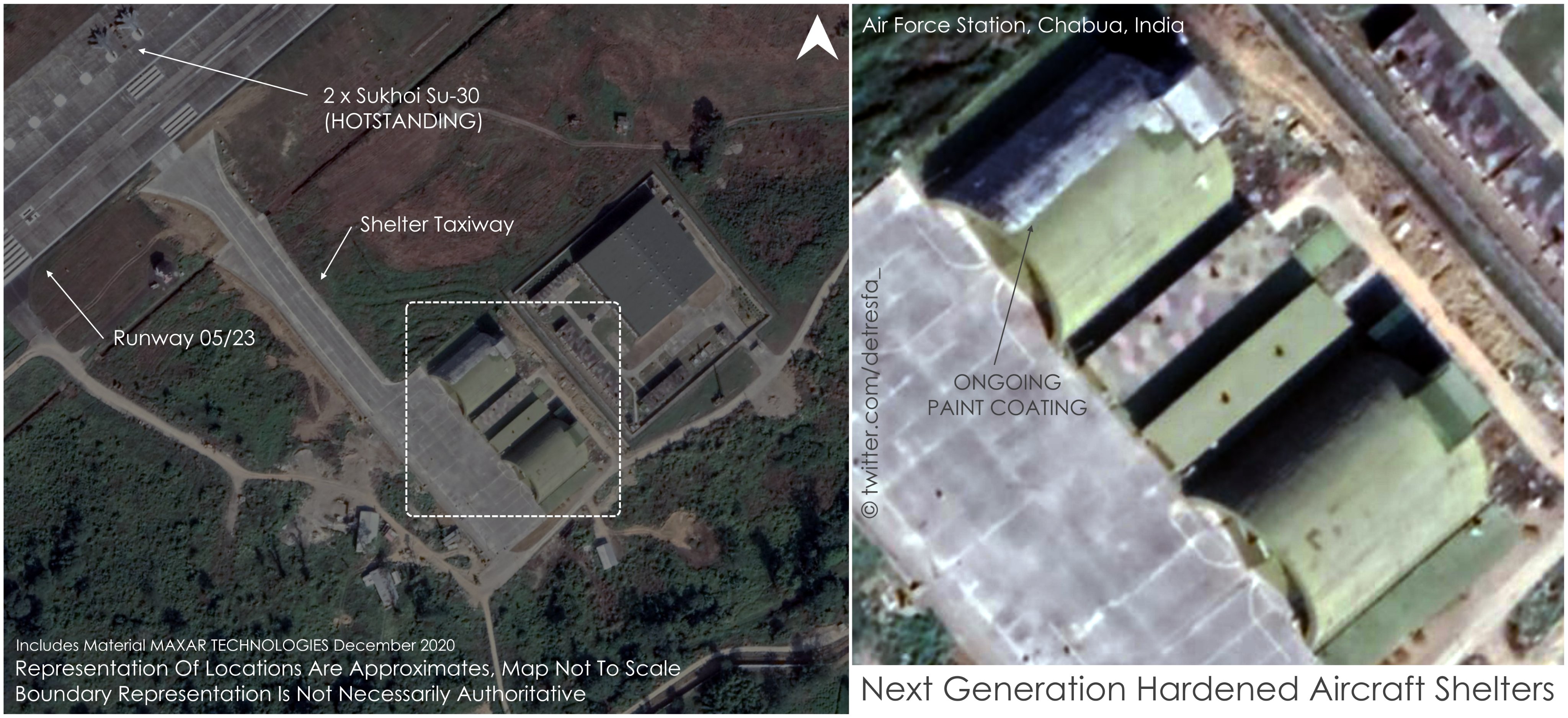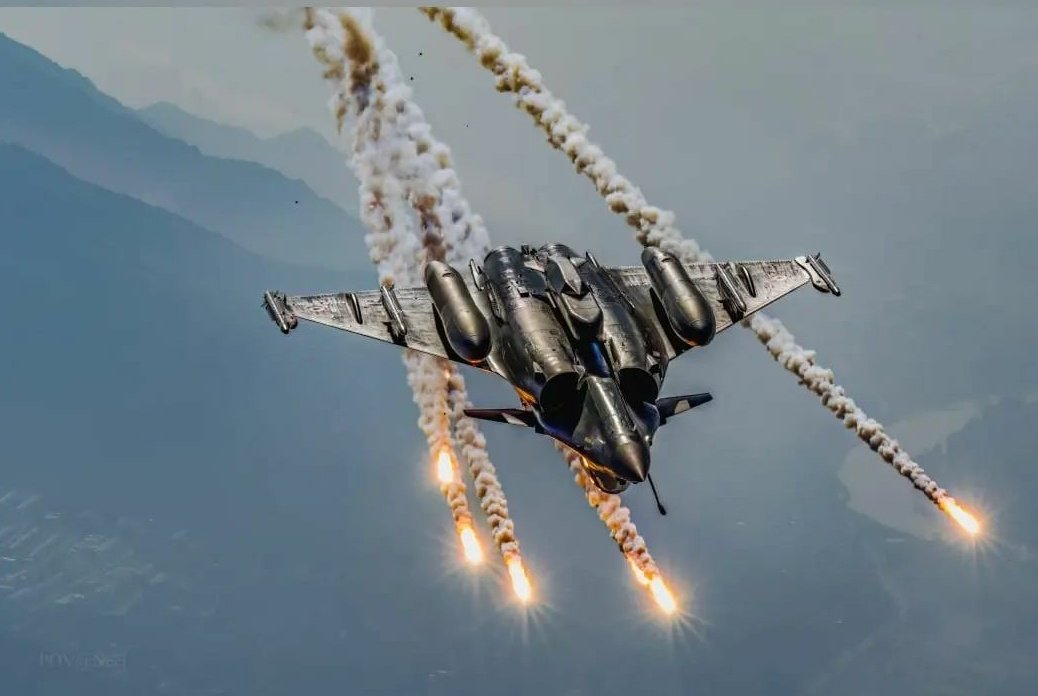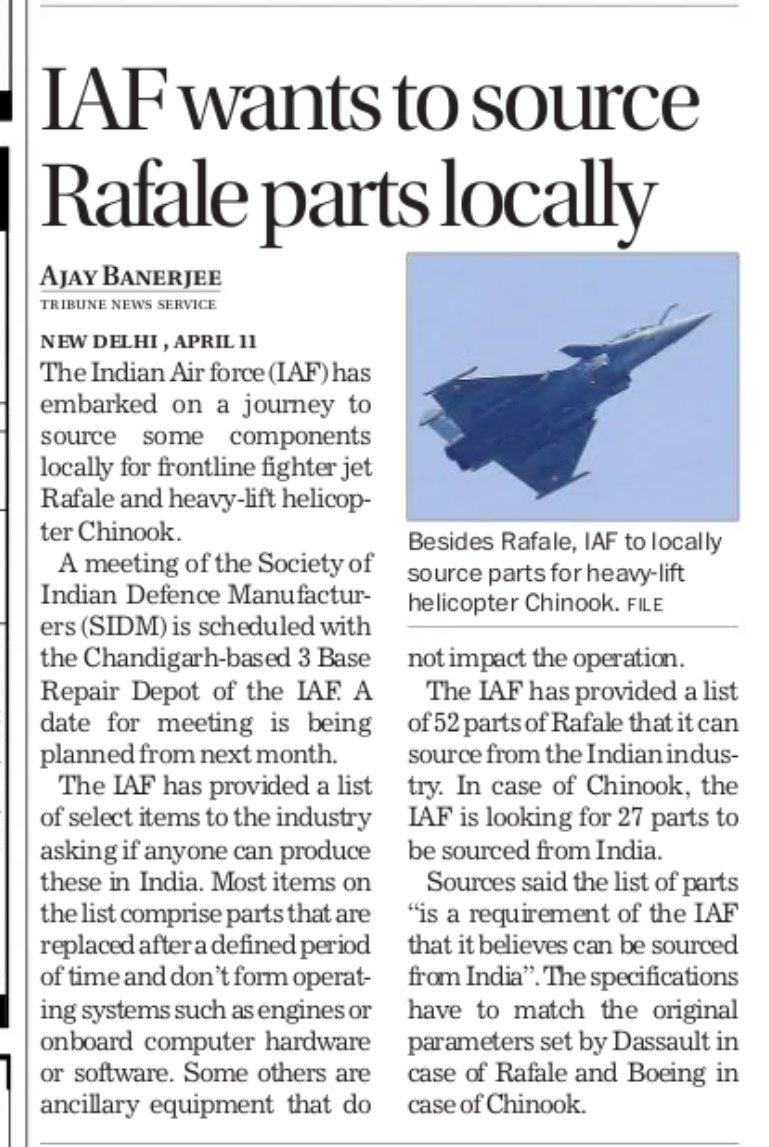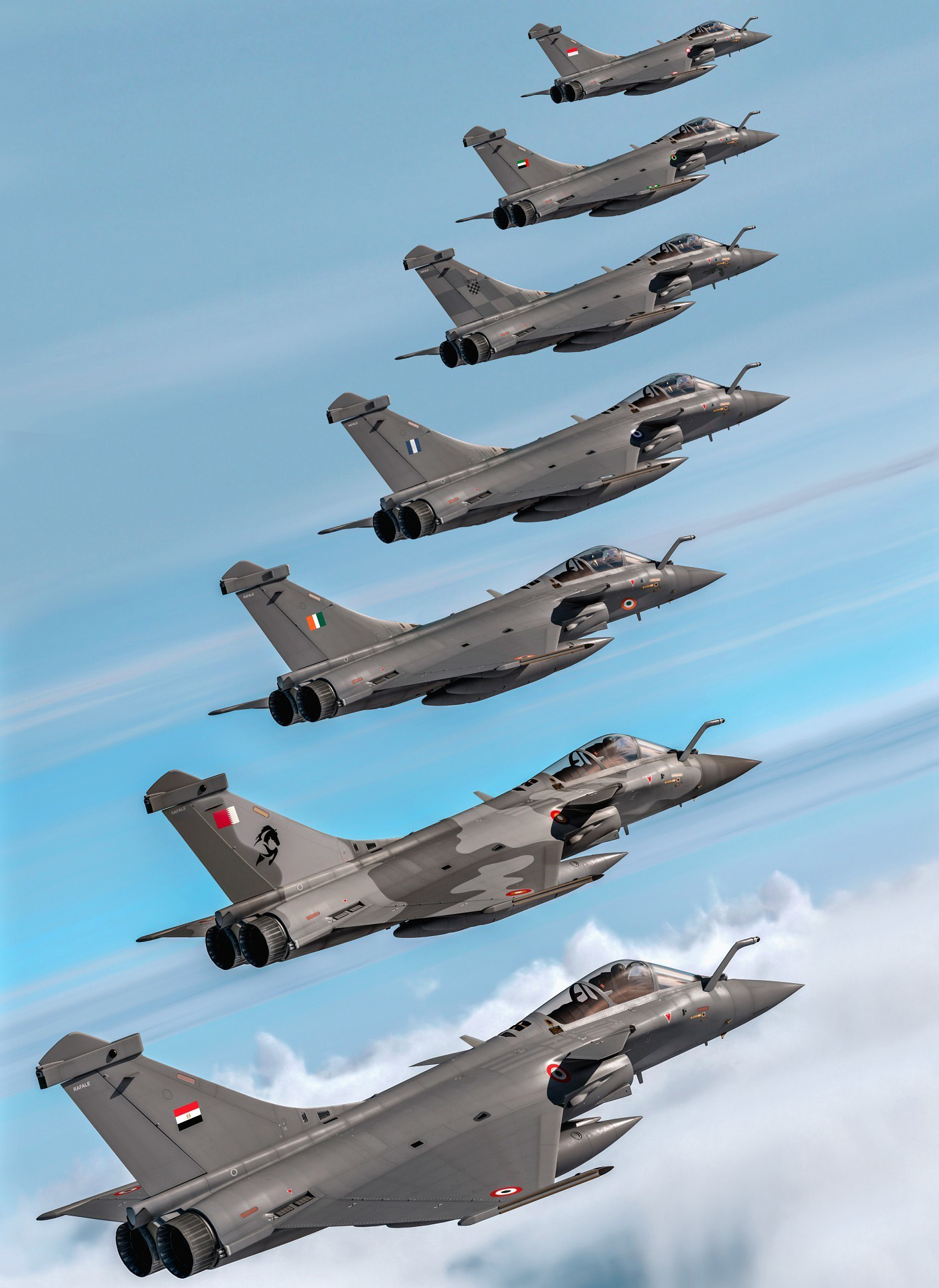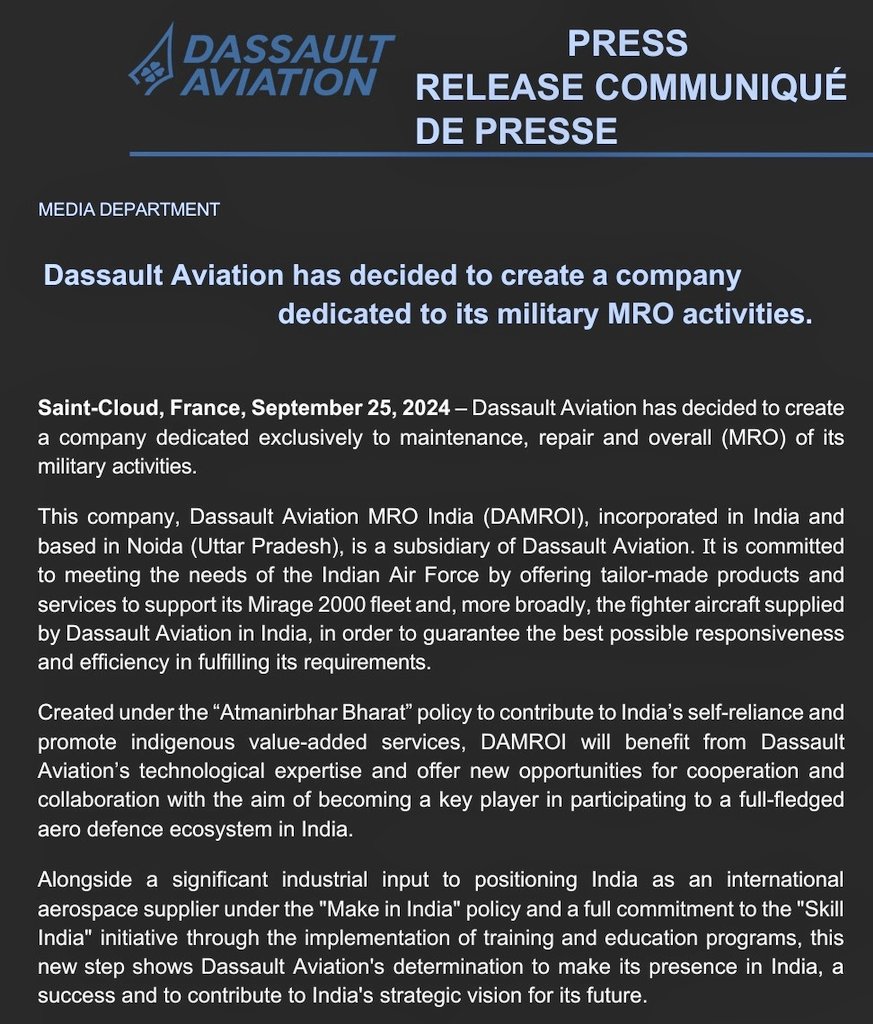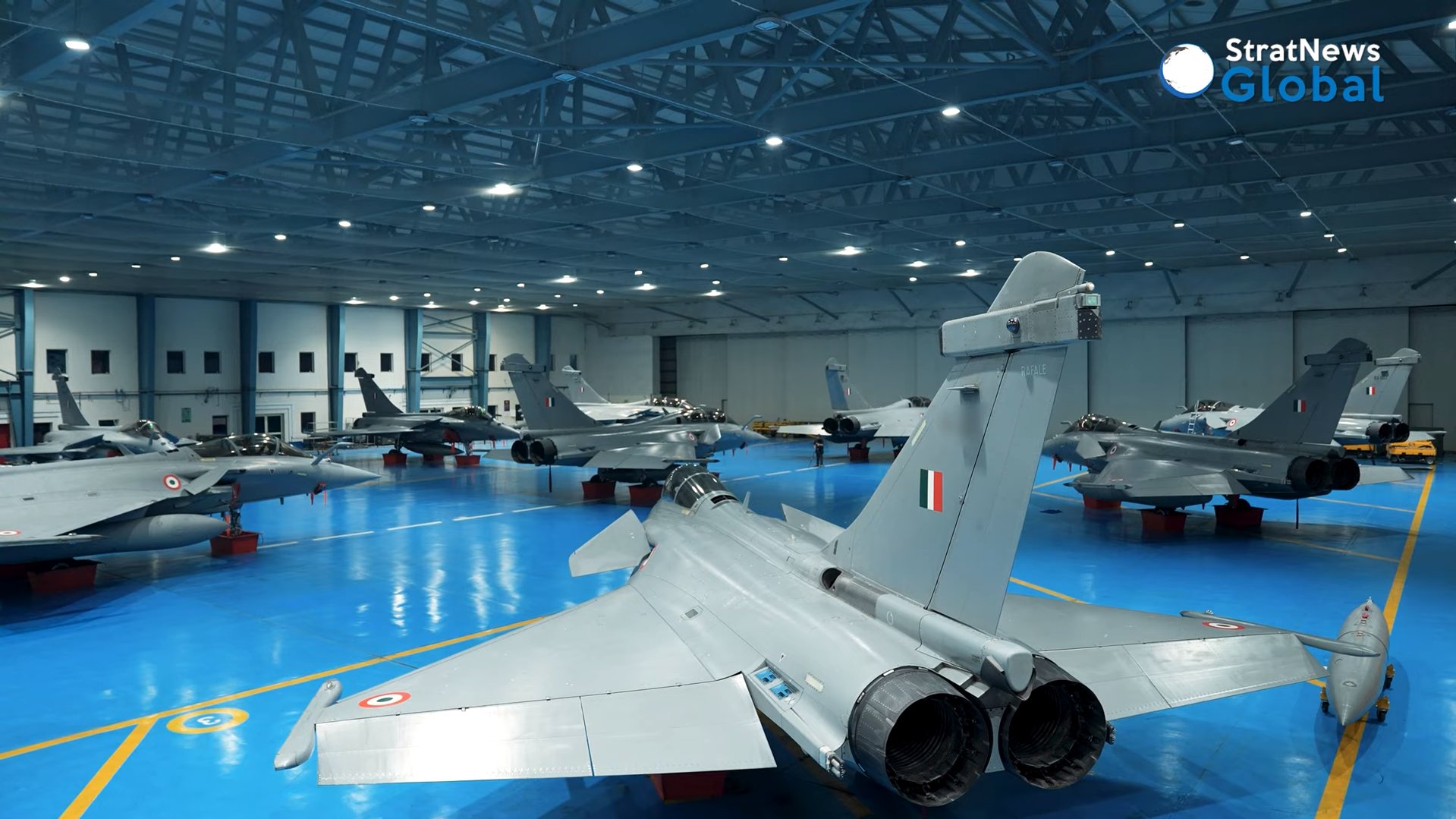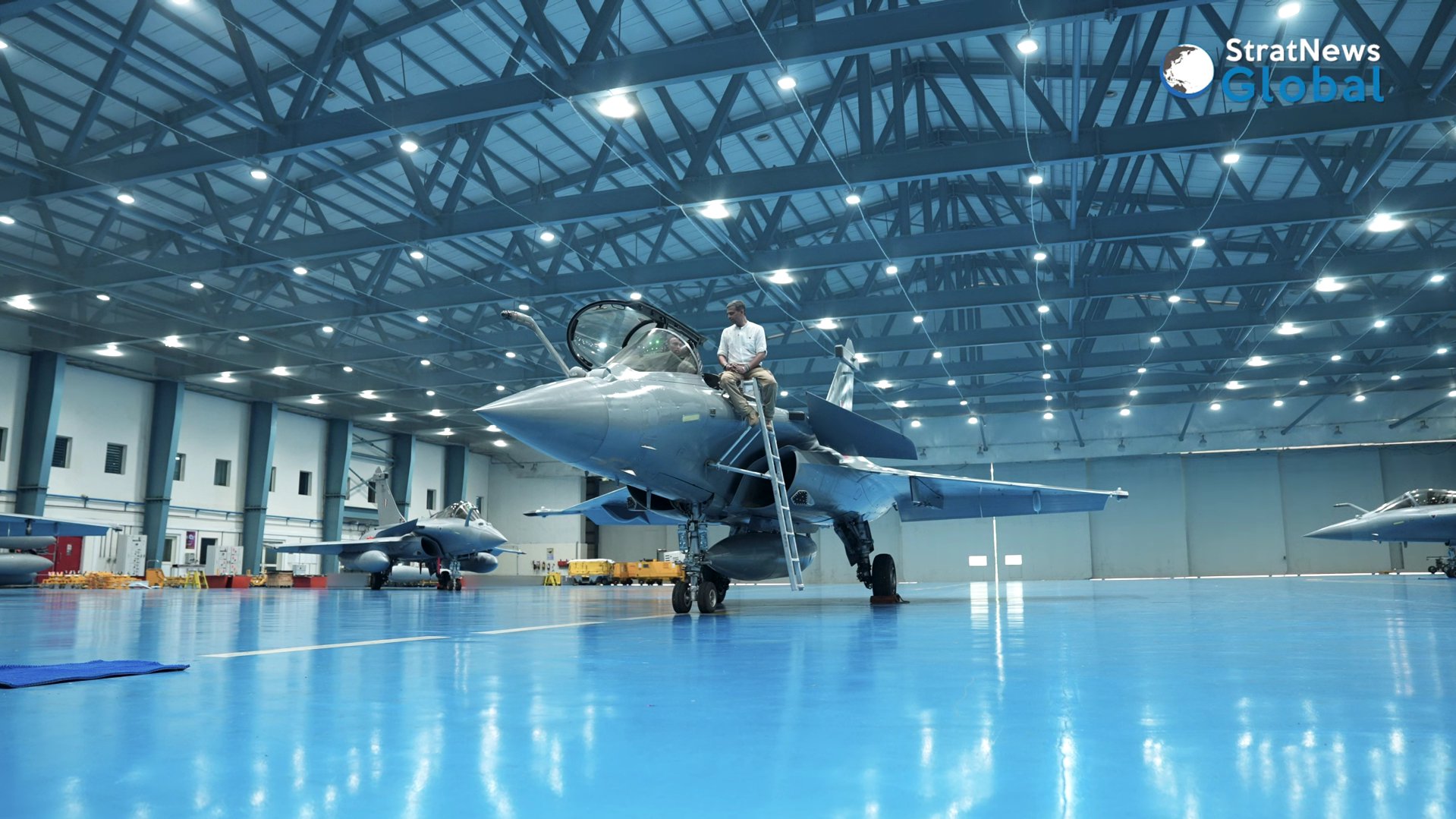India could become the largest operator of Dassault Rafale fighter jets outside France
https://scenarieconomici.it/lindia-potr ... a-francia/
25 Sept 2024
The Indian Navy and Dassault Aviation are close to sealing a deal for 26 Rafale M fighter jets. The French aerospace manufacturer hopes that India can become the second-largest operator of Rafale fighter jets if it wins the contract to supply 114 fighters under the Medium Role Fighter Aircraft (MRFA). Dassault Aviation is setting up a maintenance, repair and overhaul (MRO) facility in Uttar Pradesh to support the Indian Air Force's (IAF) French-origin fighter jets. The IAF operates 50 Mirage-2000 aircraft inducted in the 1980s and 36 Rafale fighters inducted in recent years. If Dassault Aviation’s optimism comes to fruition and it wins the mother of all defense deals – the contract to supply 114 MRFAs to the IAF, India’s Rafale fleet could expand to 176 jets. By comparison, the French Air Force operates 185 Rafales and the French Navy has 46 in service.
The Indian Navy's requirement could also increase if its second aircraft carrier enters service before the Twin Engine Deck-Based Fighter being worked on by the Defence Research and Development Organisation (DRDO). Dassault's projections for 2040 include the expectation that the Indian Navy could surpass the French Navy to become the largest operator of Rafale M fighters. Dassault plans to place additional orders for 31 Rafale M fighter jets. The Indian Navy had initially planned to buy 57 of these French aircraft, but the order was reduced to 26 units after the DRDO assured it would deliver the TEDBF on time.
The TEDBF is expected to be India's indigenous carrier-based fighter, based on the HAL Tejas land-based fighter-trainer, the first of which was delivered only a couple of weeks ago after a very long development. This makes the timely delivery of the TEDBF a bit doubtful. The French role-playing fighter jet Rafale has long struggled to find a buyer. Apart from a paltry order from Egypt and Qatar, the Rafale order book was nothing to brag about. The Rafale, which means “gust of wind” in French, failed to win contracts from Belgium, Brazil, Canada, Finland, Kuwait, Singapore and Switzerland. Its high price was a decisive factor against it.
When the Indian Air Force (IAF), the world’s fourth largest, chose the Rafale over Eurofighter Typhoons in 2012, it triggered a flood of orders for the French fighter jets. Since then, the United Arab Emirates has signed a historic deal for 80 Rafales. The aircraft took a long time to develop. The demonstrator flew on 4 July 1986. The program was officially launched in January 1988, the prototype took flight on 19 May 1991, and the first Rafale F1 was delivered to the French Navy exactly a decade later, on 18 May 2001. Since then, France has deployed the fighter jet to Afghanistan, Libya, Iraq, Syria and Mali, where it flew its longest mission in 2013, lasting nine hours and 35 minutes. From Afghanistan to Libya, Mali, Iraq and Syria, Rafale jets have outclassed their enemies everywhere and have never been shot down.
The aircraft’s manufacturer, Dassault Aviation, says the Rafale can perform “ the widest range of roles ” with the smallest number of aircraft. It can carry the long-range Meteor air-to-air missile, the MICA Beyond Visual Range air-to-air missile (BVRAAM), the SCALP long-range standoff missile, the AM39 Exocet anti-ship missile, laser-guided bombs and conventional bombs. The Indian government has come under fire for purchasing the expensive fighter jet, but Air Force officials say the aircraft's weapons suite is worth the price. “India had nothing to counter Pakistan's AMRAAM (Advanced Medium Range Air-to-Air Missile). The IAF got the Mica & Meteor fighter jets to counter the AMRAAMs and the long-range SCALP missiles, which offer the capability to be launched from home territory well outside the enemy's air defence envelope,” a retired IAF officer told EurAsian Times, requesting anonymity. “Since no one was offering similar weapons to India, no price can be too high to get our hands on them,” the official added.
Strategic ties between India and France are on an upward trajectory. In the upcoming strategic dialogue between India’s National Security Advisor Ajit Doval and French Diplomatic Advisor Emmanuel Bonne, to be held on September 30 in Paris, the two sides are expected to discuss building nuclear- capable attack submarines. Also on the table is an offer to transfer 100 percent of the technology for 110 kilo-Newton thrust aircraft engines and fully capable underwater drones to India. The two countries have seen a surge in defense partnerships as they pursue a multipolar world. Macron’s regular emphasis on “ally but not aligned” resonates with the Indian government’s regular promotion of “multi-alignment”.
India has been beefing up its submarine force, considering the looming threat from China. The French offer to support the construction of nuclear submarines has been a major boost for the indigenous submarine development program. Additionally, Paris has offered a range of unmanned systems in the air, surface and underwater domains to enhance India's ISR (intelligence, surveillance and reconnaissance) capabilities. In September, Safran Engines President Ross McInnes, who was born in Kolkata, offered a 100% technology transfer for the engines when he visited India in early September.
In the 1970s, Safran helped the Indian Space Research Organisation (ISRO) develop space rocket engines. Now, the offer is to jointly design, develop, certify and manufacture 110kN engines for the future Advanced Medium Combat Aircraft (AMCA) projects. The technology transfer also includes training Indians in advanced metallurgy. According to media reports, the jointly developed engine will be a sovereign property of India, which can export to third countries without any restrictions
